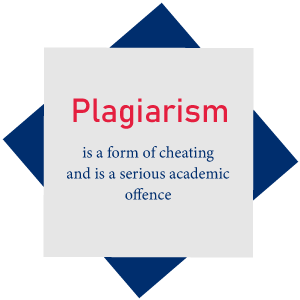Table of Contents
“Understanding and Addressing Plagiarism in Academic Writing” delves into the intricate landscape of scholarly composition, shedding light on the pervasive issue of plagiarism and its multifaceted implications.
In the academic line, students mostly rely on online and digital publications to support their assignments and thesis work.
During this collection and implementation of knowledge, there are chances that they might commit duplication in their work.
Such duplicated work is denoted by the term plagiarized work in academic writing. Plagiarism is not necessarily intentional every time, but a lack of paraphrasing skills and improper citation can also lead to committing unintentional plagiarism. So how can students avoid it?
This article will discuss plagiarism in academic writing and how students can avoid it. We will also share some practical and easy methods to prevent plagiarism in your thesis paper and assignments.
What is Plagiarism in Academic Writing?
Plagiarism is using someone else’s piece of writing as your original idea or written work. Students might believe that featuring a quotation in their essay or thesis paper would not be considered plagiarism because it is too mainstream.
But the definition of plagiarism states that you were fully aware of featuring someone else’s work as your own without mentioning their credits.
This statement implies every published and unpublished material, including books, ePub, research work, social media content, blog posts, journalism, and even quotations from famous entities.

What is Considered Plagiarism in Academic Writing?
In academic writing, plagiarism can occur in many forms, including intentional and unintentional activities.
● Stealing or borrowing a research paper, thesis paper, or assignment paper from an individual or
an online platform.
● Hiring someone else to write the academic documentation, assignment, research, or thesis
paper.
● Copying large pieces of text without proper citations and quotation marks.
● Mentioning the words related to your source too closely with the paraphrased citations.
● Present someone else's idea by featuring their research work in your piece of writing.
● Re-submitting your research work, previously published in a thesis or assignment paper. It is
also known as a form of self-plagiarism.
Why Does Plagiarism Matter in Academic Writing?
Plagiarism is an unethical conduct that defies the principles of honesty and originality. Students must know that all the forms of ideas, words, research data, and writing should become the basis of their work.
Therefore, students must run their content through a plagiarism checker to maintain academic integrity. Passing on someone else's work is a sign of failure since you did not put effort and time into producing something unique.
Moreover, duplicated content reveals that you were ineffective in learning throughout your academic career. You can face heavy penalties like a failure in the course, lower grades, academic probation, or even expulsion in the worst-case scenario.
How to Remove Plagiarism from Academic Work?
There are several ways to remove plagiarism from your academic work by following these methods, which help to enhance your writing skills and improve the quality of your written work.
● Paraphrase Written Work
The paraphrasing technique is the most effective way to deal with plagiarism. It’s a skill that every writer should know to master the art of unique writing. If your research work appears to have duplicated sections, you can paraphrase them by changing their synonyms.
While paraphrasing, maintain the original meaning of the written work by finding the set of words or phrases that fit in the context. In this way, the duplicated words and phrases will be exchanged with a new set of unique words.
● Using a Plagiarism Remover
If you lack to remove duplicated writing manually, it’s ideal for taking assistance from a plagiarism remover to deal with excessive duplication.
These tools will remove plagiarism from the content to make it look unique with better vocabulary and readability. Follow these steps to deal with plagiarism in your academic content.
ALSO READ
Leave a Reply